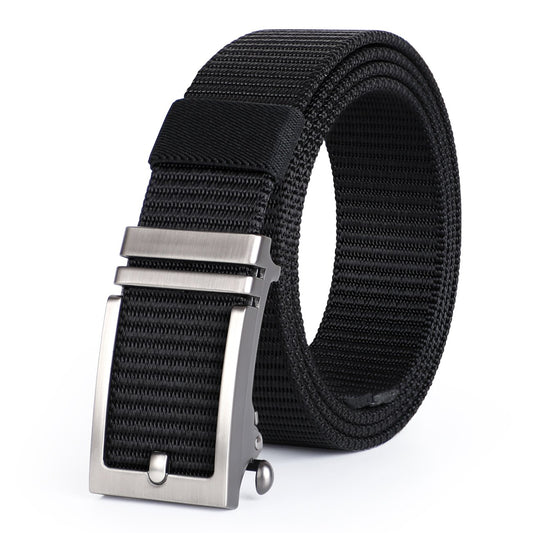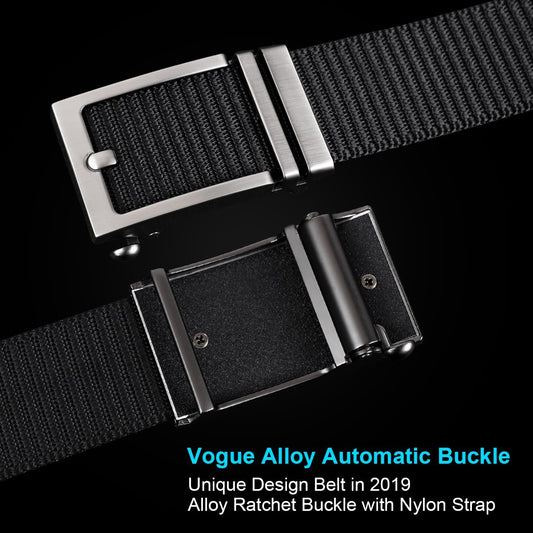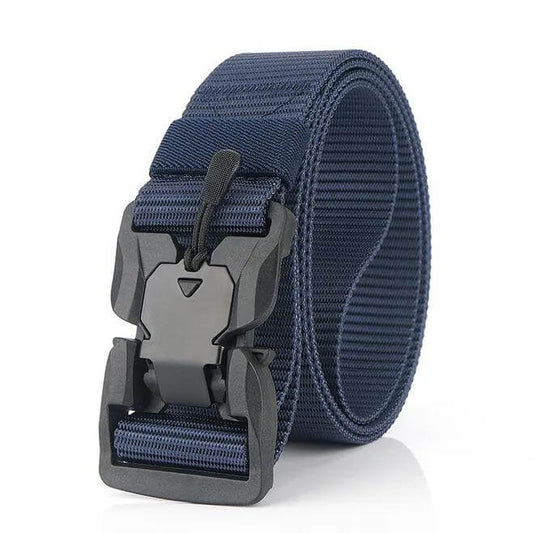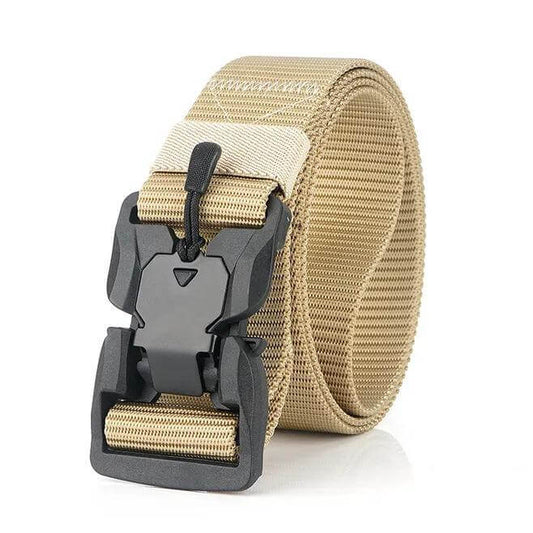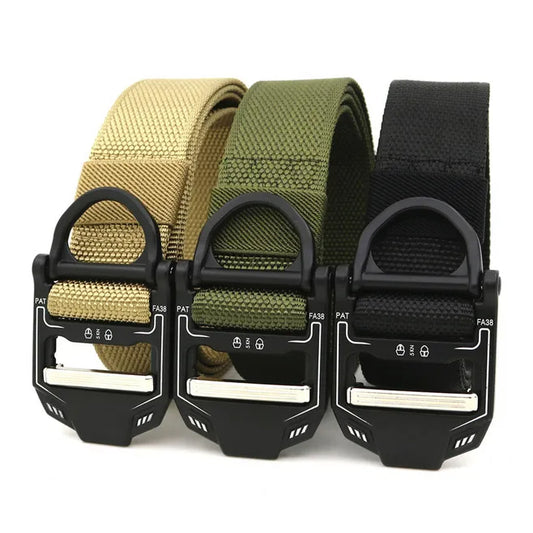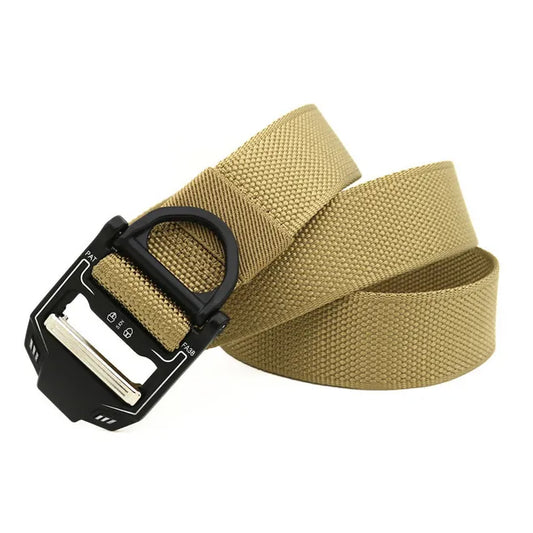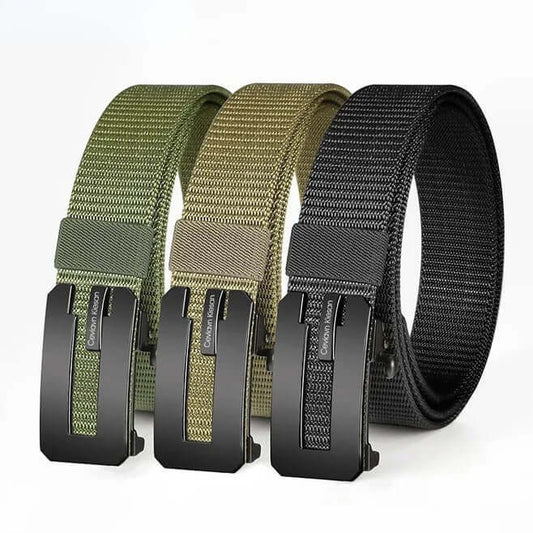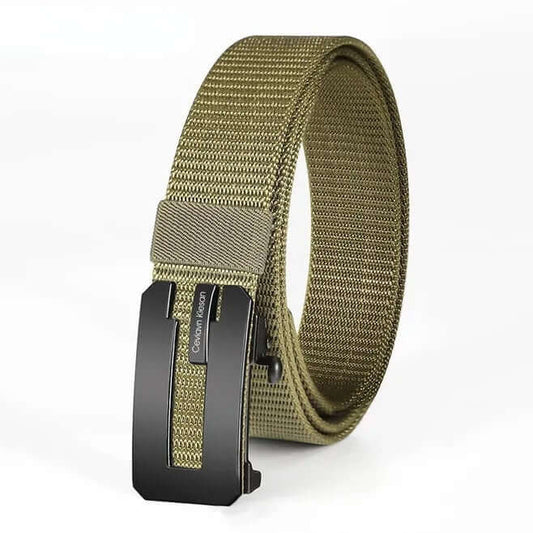Collection: Tactical Belt
-
Nylon Belt with Automatic Buckle
Regular price $19.99Regular priceUnit price / per$24.99Sale price $19.99Sale -
Nylon Tactical Belt Quick-Release
Regular price $17.99Regular priceUnit price / per$21.99Sale price $17.99Sale -
Tactical Gun Belts for Camping and Outdoor Activity
Regular price $17.99Regular priceUnit price / per$29.99Sale price $17.99Sale -
Men Nylon Slide Belt
Regular price $17.99Regular priceUnit price / per -
Tactical Belt Military Outdoor Use
Regular price $18.88Regular priceUnit price / per
Making sure that you have a comprehensive, reliable and easy to use belt is crucial when it comes to any tactical situation. Whether you go hunting, hiking or you are a part of the police for example, you need a dependable and very durable belt to perform your work. That’s why it can be a great idea to invest in a tactical belt, and there are a variety of options for you to choose from.
Choosing the right tactical belts is not a walk in the park, though. There are all kinds of models with special features and accessories. That means you need to figure out what tactical duty belt is the best for your specific use case. Then you also want to see the price for the tactical battle belt and see if it fits your budget.
What is a Tactical Belt?
A good tactical belt can be very useful in a plethora of situations, be it combat, real life survival and so on. At its core, the tactical belt itself is a rugged belt that can support gear and guns, along with other accessories. However, in the modern era, these tactical belts are everyday belts that offer great benefits. They can deliver concealed carry, but also attachments that make it easy to have access to any item that you might need.
These belts are made using very strong materials, they are very reliable and durable, and also designed to clasp/unclasp in under a second. Combined with other belts, they are more versatile, since you can add some accessories to them. That makes these belts a game changer, and a wonderful thing to have when you need quick access to any item you want.
4 Benefits of Tactical Belt
Now that you know what is a tactical belt, you should understand why having such a belt is a great idea. Whether you want a tactical gun belt or tactical duty belt, these are exceptional belts with a plethora of use cases. They also have a multitude of benefits, as you can see below:
· A tactical belt gives you very good security, and you can also add a variety of items on top of it. That sense of convenience, combined with the very good quality is what sets the best tactical belt apart from many other items. You can also conceal it under your equipment as well, if necessary.
· You get to stay safe at any given time, along with having direct access to the belt. That’s an exceptional benefit, and it can provide a tremendous result and value every single time. You also get to keep all the basics within your hand’s reach. Generally, it takes under a second to access anything on the belt, which can prove to be a major advantage.
· It’s great for a variety of tasks. Obviously, the police forces and the military use these belts with their own tactical belt setup. But aside from those tactical gun belts, there are also hikers, survivalists and many others that want to use these belts on a daily basis. It’s up to you to find the best tactical gun belts or the best type of belts you want.
· A mens tactical belt usually comes with multiple attachment points. That’s where you can add all kinds of accessories. In doing so, you have easy access to pretty much any item on the belt. And it still gives you the flexibility you want to have while running or going to any location without any hassle.
How to Choose The Right Tactical Belt for You?
When you want to buy a good tactical belt, you should always try to focus on getting the best value for money. A high quality, durable tactical belt will be preferred, but there are other things to consider when purchasing such a product as well.
· Always focus on the durability of the tactical belt and the features that it provides. Belts made out of top grain leather, polymer or nylon are usually the most versatile when you want to buy tactical belts.
· Check the load bearing capacity as well. Every tactical belt will have a certain limit when it comes to how many items you can add onto it. Obviously, the more you can add, the better. Although in some cases, you may want to go lighter, depending on the situation.
· Does the tactical belt have any security features? In general, these tactical belts are known for offering quick release buckles, along with easy removal in case there’s any emergency.
· A tactical belt with multiple attachments points and MOLLE webbing is preferred. That makes it much easier to organize everything on the belt, without having to worry about any damage or issues that might arise.
· What is the price of the belt? Assess the price of the unit and see if it can deliver great value or not. Of course, you always want to go for quality rather than a lower price, so keep that in mind.
· Also, remember that some tactical belts will have warranty. Some of them will offer warranty per products, others just for the belt or specific parts.
Conclusion
Purchasing a great tactical belt is a solid investment if you want to have a secure, exceptional and durable belt. A tactical belt is versatile, and with its unique attachment system, you can fully customize it the way you want. You always want to invest in the best belt that you can find, so focus on quality rather than low prices. Use our tips and ideas above to find the perfect tactical belt!
Frequently Asked Question on Tactical Belt
How to wear a tactical belt?
You set the tactical belt around the waist and then secure it properly. After that, you can start adding various attachments to the belt, those can be secured individually for the best possible use case.
How does a tactical belt work?
A tactical belt is similar to a regular belt, but it’s made of even more durable materials, and you can add multiple attachments to them. Tactical belts are widely used by the policy, but also in survival situations, while hiking and many other use cases. You just attach the belt and then add the desired items on top of it.
How to use a tactical belt?
The way you use a tactical belt is simple, you add the desired attachments and start accessing them when needed. The belt itself will remain a regular, durable belt, but you can still have access to all kinds of accessories. A tactical belt can be used in a variety of scenarios, and it can provide you with an exceptional return on investment. Plus, its customizability is what sets it all apart from other belts on the market!
How to set up a tactical belt?
Setting up a tactical belt will always vary based on what type of accessories you need. Normally, you want to take the belt, and then you can start adding the necessary items on top of it. Depending on the belt type, you can have holsters, first aid kits, knives and many other items. They all have their own attachment that can be added onto the belt. The great thing about having such a belt is that it’s versatile, very comprehensive, and also extremely easy to use.
Helpful Resources:
- Explore our premium Men's Leather Belt selection for timeless style.
- Check out our durable Tactical Belt range for outdoor adventures.
- Add some sparkle with our elegant Rhinestone Belt collection.
- Improve your circulation with our Compression Socks lineup.
- Find your next reliable Nylon Backpack for everyday use
- Complete your look with our sleek Skinny Tie options.
- Browse our classic Leather Wallet designs for quality craftsmanship.
- Discover our versatile Slide Belt collection, perfect for any occasion.

